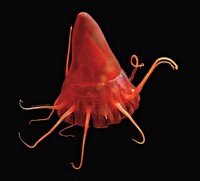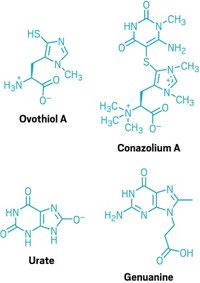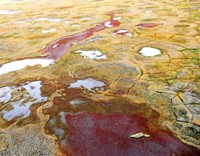Advertisement
Grab your lab coat. Let's get started
Welcome!
Welcome!
Create an account below to get 6 C&EN articles per month, receive newsletters and more - all free.
It seems this is your first time logging in online. Please enter the following information to continue.
As an ACS member you automatically get access to this site. All we need is few more details to create your reading experience.
Not you? Sign in with a different account.
Not you? Sign in with a different account.
ERROR 1
ERROR 1
ERROR 2
ERROR 2
ERROR 2
ERROR 2
ERROR 2
Password and Confirm password must match.
If you have an ACS member number, please enter it here so we can link this account to your membership. (optional)
ERROR 2
ACS values your privacy. By submitting your information, you are gaining access to C&EN and subscribing to our weekly newsletter. We use the information you provide to make your reading experience better, and we will never sell your data to third party members.
Microbiome
Antarctic worms’ antifreeze “superpowers” come from their microbiome
Three species of Antarctic marine worm rely on bacteria to produce antifreeze proteins
by Fionna Samuels
July 3, 2024

In the frigid waters of the Antarctic Ocean, only the hardiest animals survive. Some layer up with blubber to keep warm. Others produce natural cryoprotectants, either antifreeze proteins or smaller molecules, to prevent ice nucleation in their cells. Now, researchers have discovered three marine worm species that take a different approach: outsourcing the production of antifreeze proteins to their microbiome (Sci. Adv. 2024, DOI: 10.1126/sciadv.adk9117).
The team set out on a boat to collect wild polychaetes—marine worms—from the sediment beneath Antarctica’s Terra Nova Bay, writes lead researcher Cinzia Corinaldesi, a marine ecologist at the Polytechnic University of Marche, in an email. When the team compared the proteomes of the collected worms to the proteomes of the worms’ microbiomes, she says they were thrilled to discover that “the cryoprotective proteins in the polychaetes were not produced by the worms, but by the bacteria.” It’s as if the worms’ microbiomes give them survival “superpowers.”
“The idea that the microbiome of an organism can confer properties the organism needs to survive is a super cool avenue of research,” says Byron Adams, a biologist at Brigham Young University who studies how Antarctic nematodes on land survive brutal conditions. This work is compelling, he says. Next, Adams hopes the researchers drill down into the mechanism and “follow the genes in the bacteria through their expression and then usage by the worm.”





Join the conversation
Contact the reporter
Submit a Letter to the Editor for publication
Engage with us on Twitter